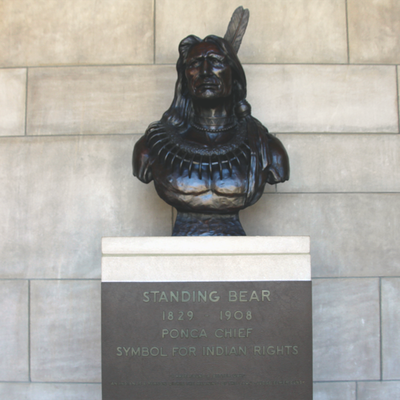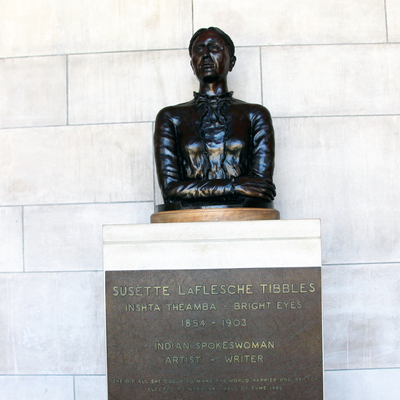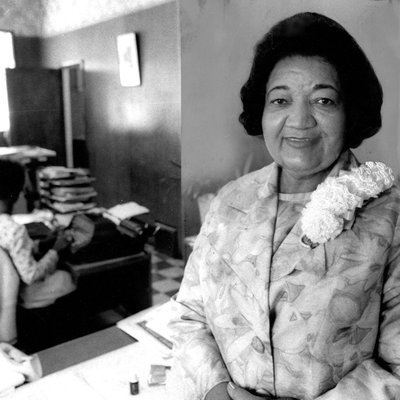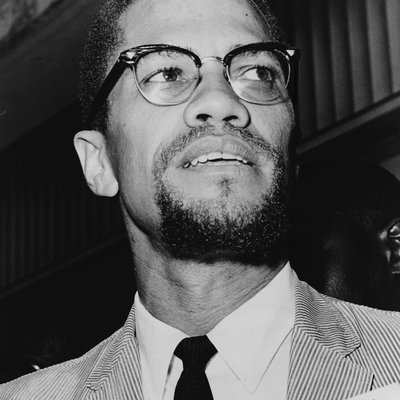CH 9
Memorial Chamber
Public Service
Lesson 1 - Leaders and Service
The battle for freedom has taken many forms. Americans fought Americans in a civil war that won freedom for slaves. Americans fought Europeans in a world war that won liberty for peoples oppressed by Hitler. And Americans have helped win freedom for others without firing a shot.

This mural celebrates “The Ideal of Freedom” with a scene from the 1879 trial of Ponca Chief Standing Bear. Even though he didn't speak English, Standing Bear was willing to stand up and speak out for his rights. You see him here with writer Susette LaFlesche Tibbles, who interpreted for him, and with General Crook, who helped get him a trial and legal representation. Until Standing Bear's trial, Native Americans had not been recognized as persons under United States law. Standing Bear worked within the system and bought about real change. He established the humanity of his people under the law and won protection for them under the U.S. Constitution when he declared himself a man. (Reset image)
Standing Bear’s family is also featured in the mural scene, waiting in the back of the court room.
Standing Bear and Susette LaFlesche Tibbles are featured here in the Memorial Chamber and are also members of Nebraska’s Hall of Fame.
Standing Bear wasn't a senator or a governor or a judge, but he was certainly a leader who shaped Nebraska history. There have been many leaders who have acted on their beliefs and brought about changes in the laws, as well as changes in the way people live with one another.

Some of these leaders are honored in the Nebraska Hall of Fame. [provide link to Foyer here?] The Hall of Fame honors people such as Rev. Edward J. Flanagan, the founder of Boys Town, and Grace Abbott, the social reformer who tried to help children by changing laws.
Some chosen for this honor are business leaders who also contributed to charity projects, like Hall of Fame member Nathan Gold. Some are artists who help win understanding for others through their work, like Hall of Fame member Mari Sandoz.
Some leaders are active locally but help bring about change for the state, like Severiano "Sam" Franco, who helped in the establishment of Nebraska's Mexican American Commission and served on the Nebraska Equal Opportunity Commission.
It takes all kinds of citizens, inside and outside the government,
to help achieve the ideal of freedom.
SOMETHING TO THINK ABOUT . . .What makes a good leader?



